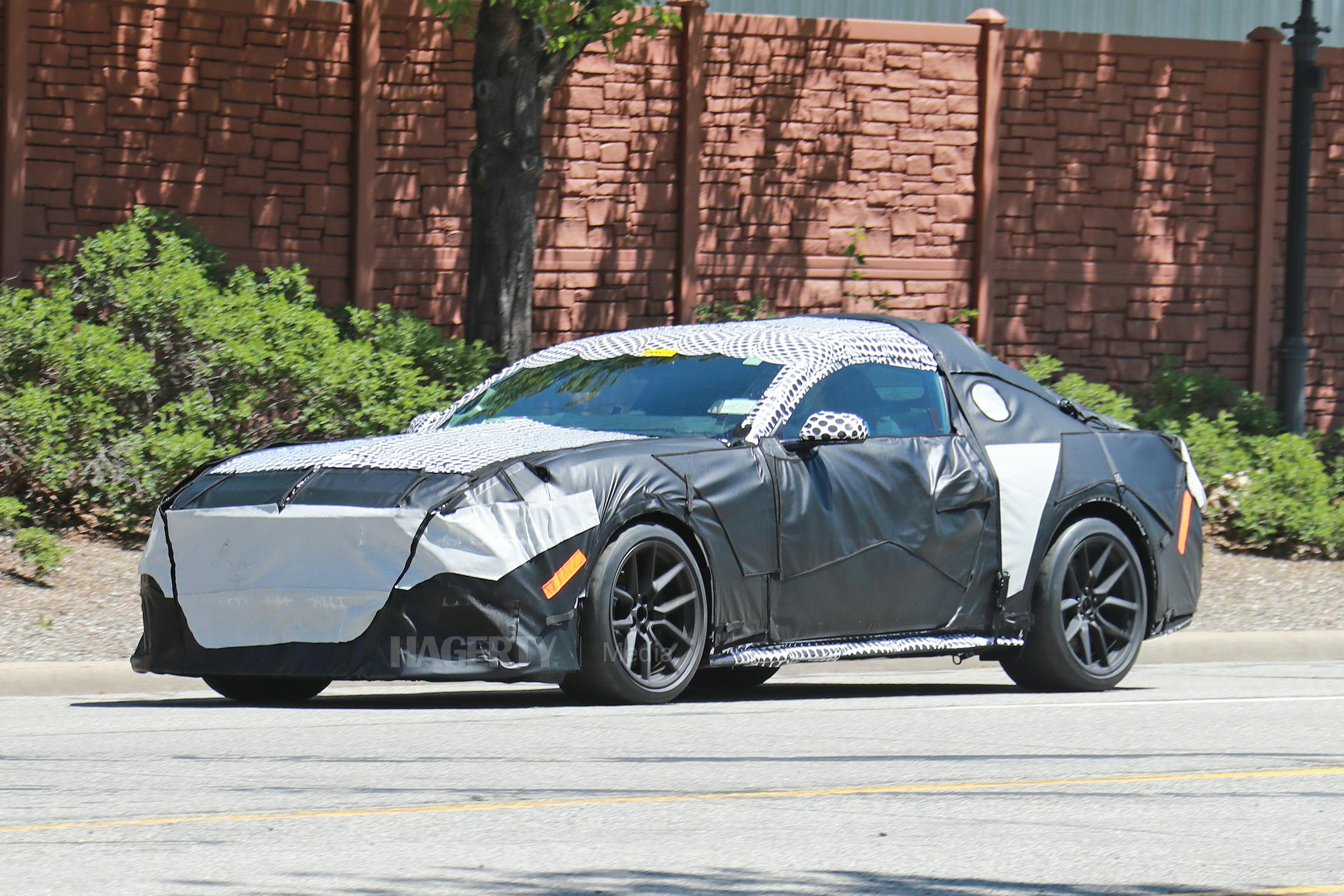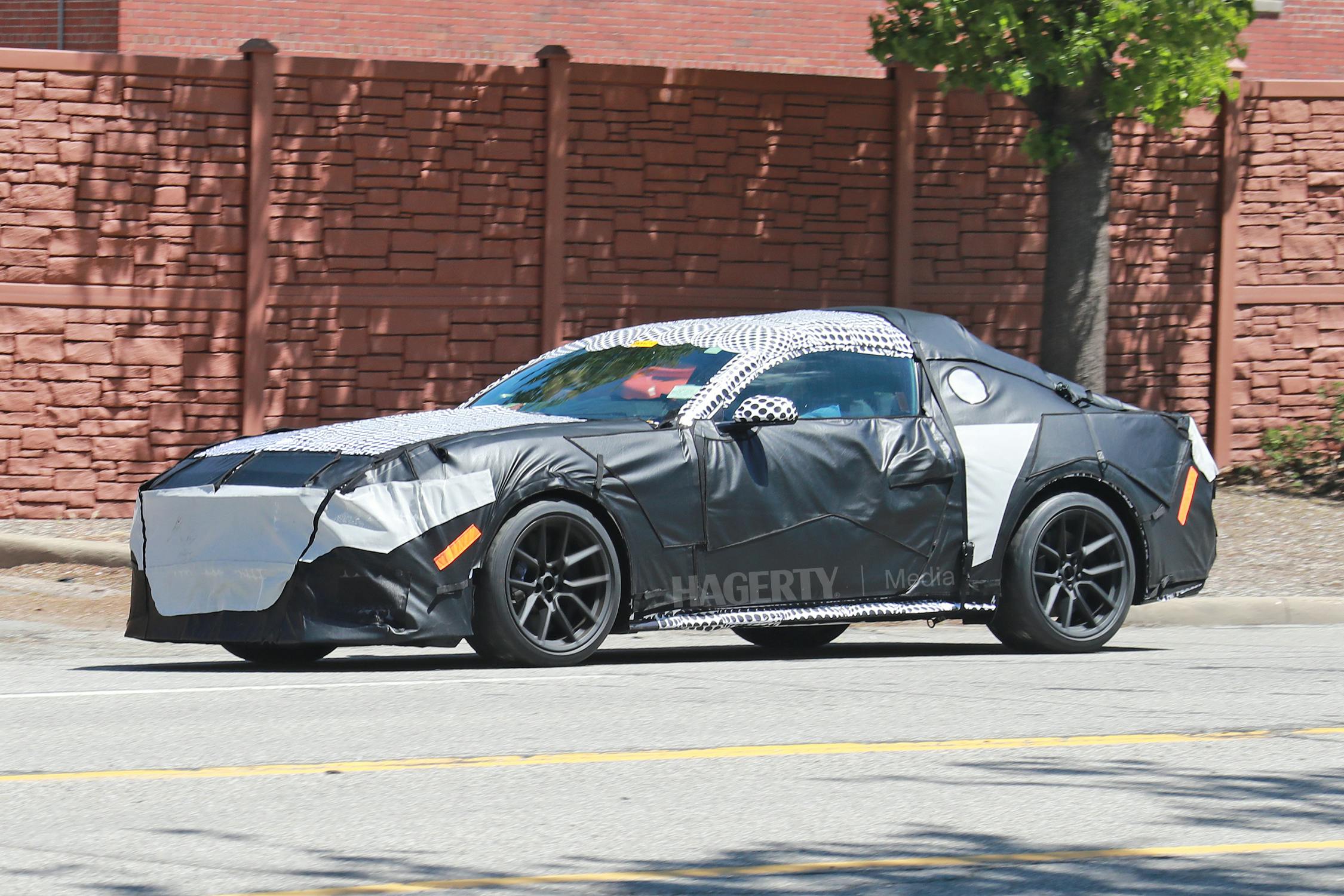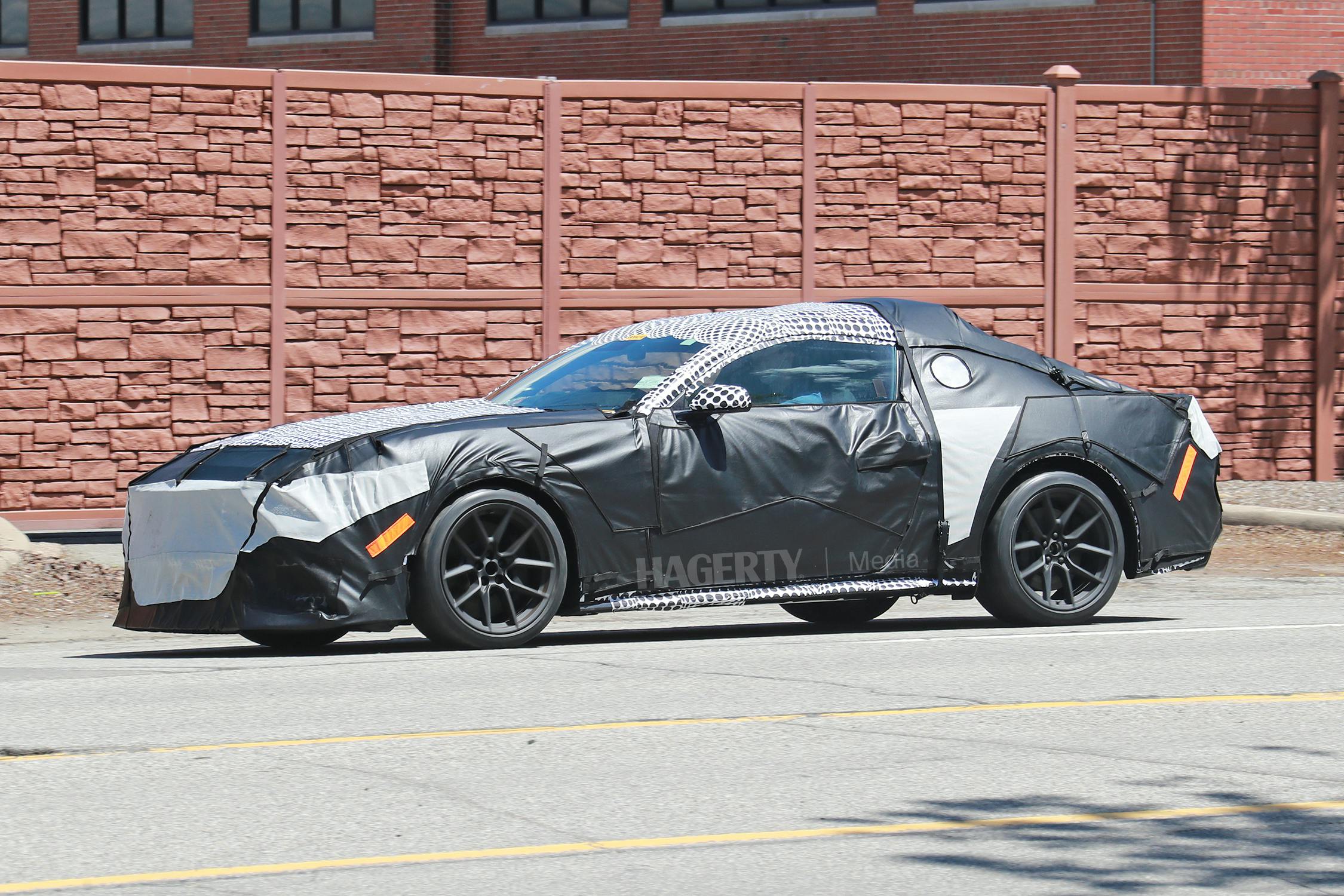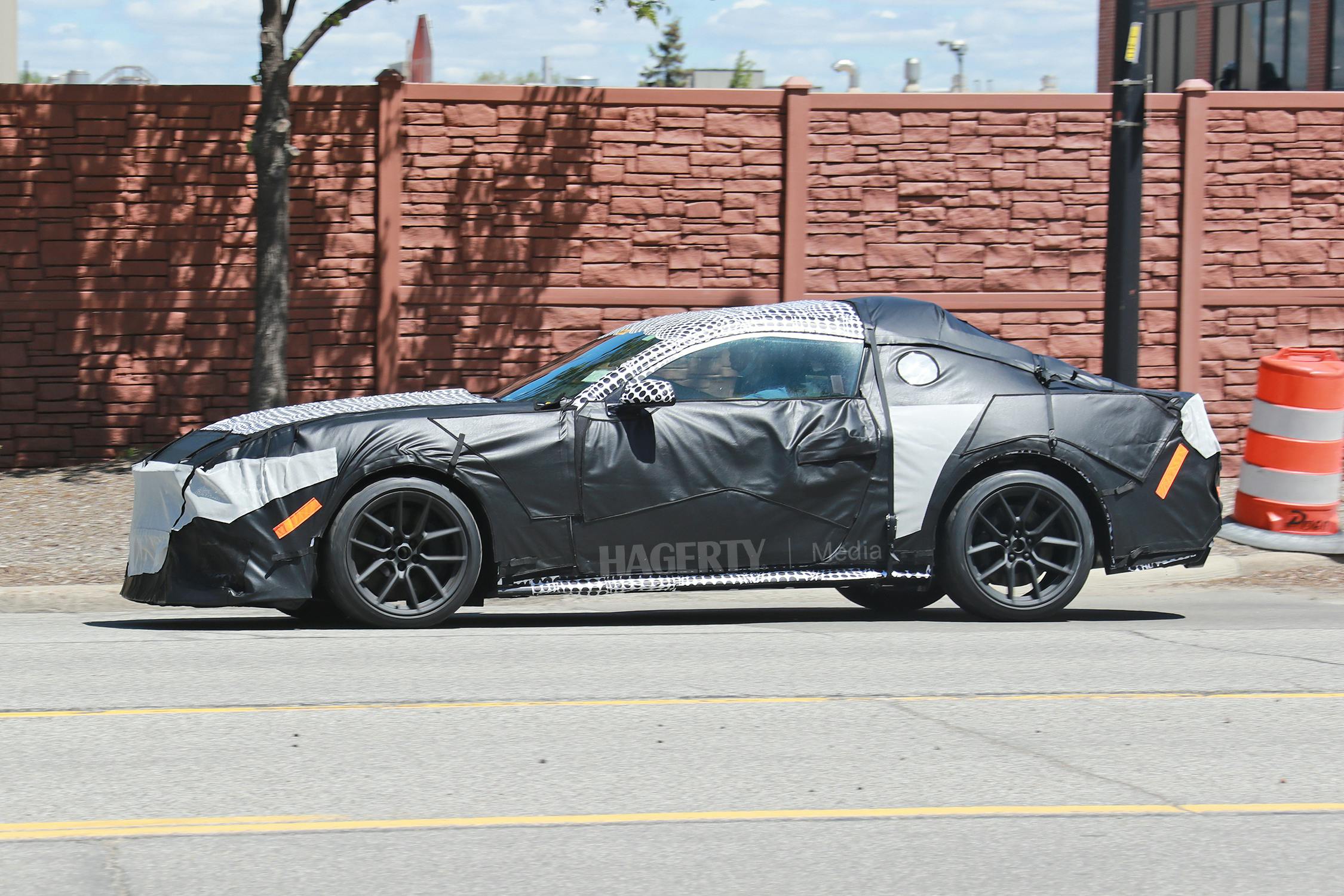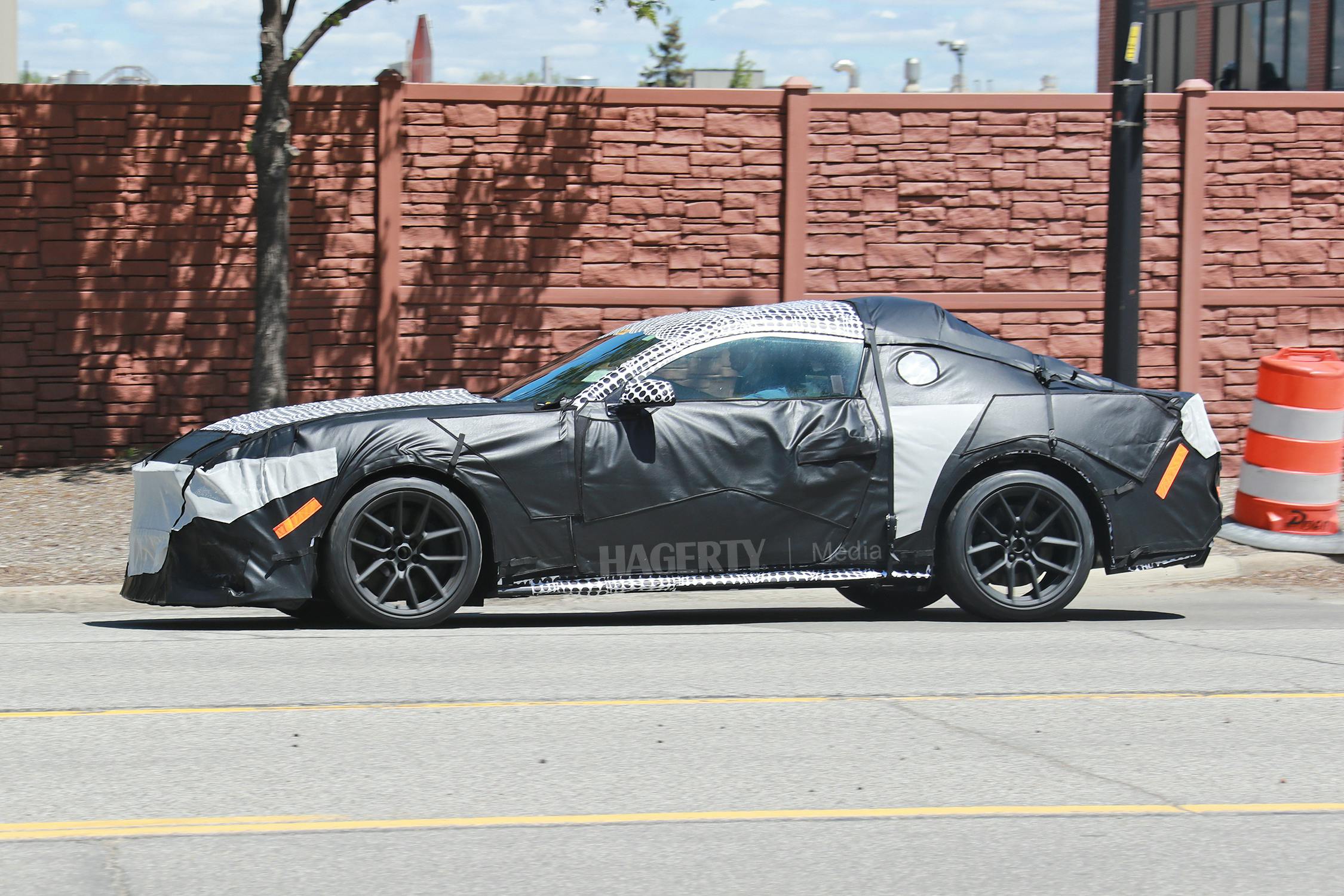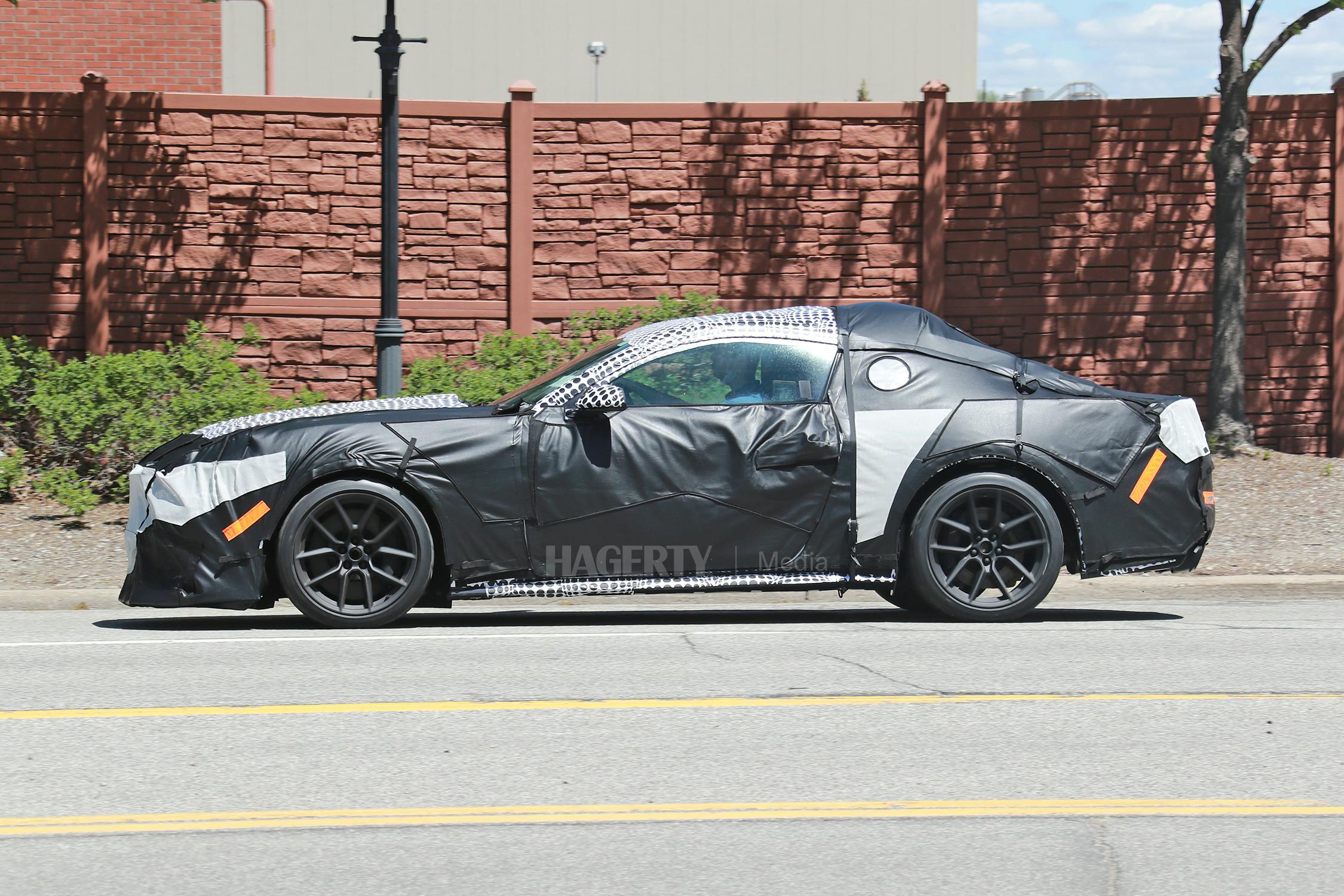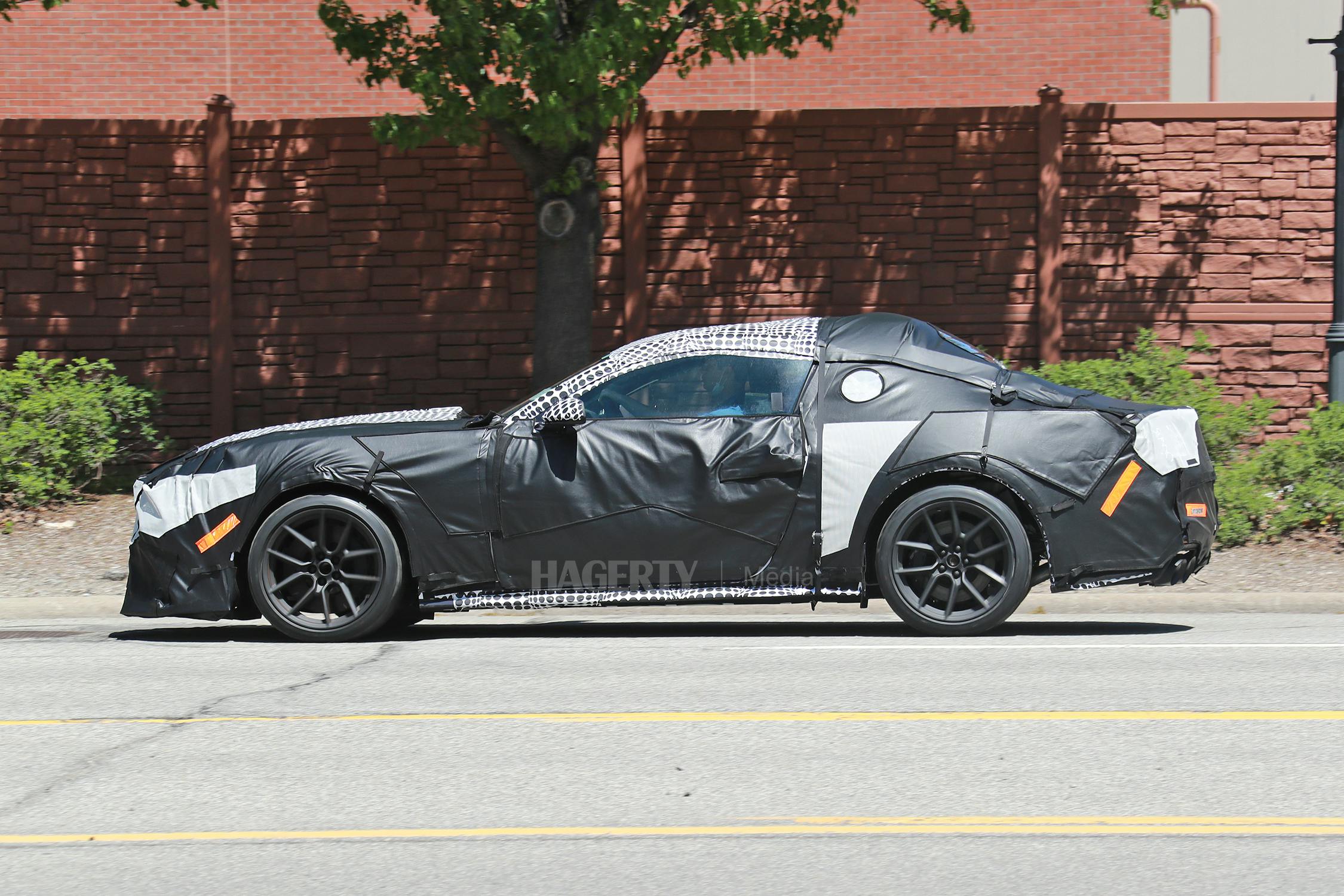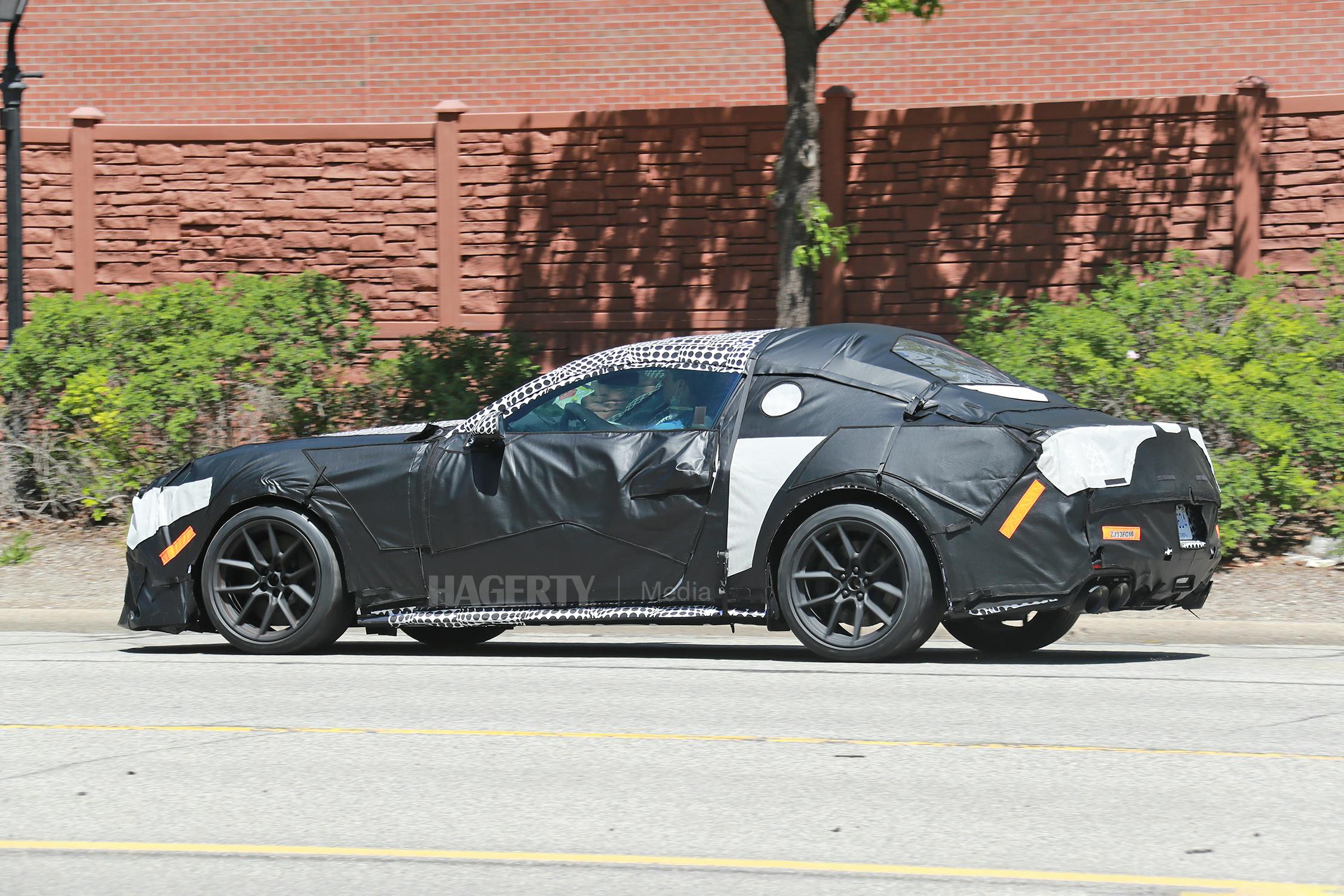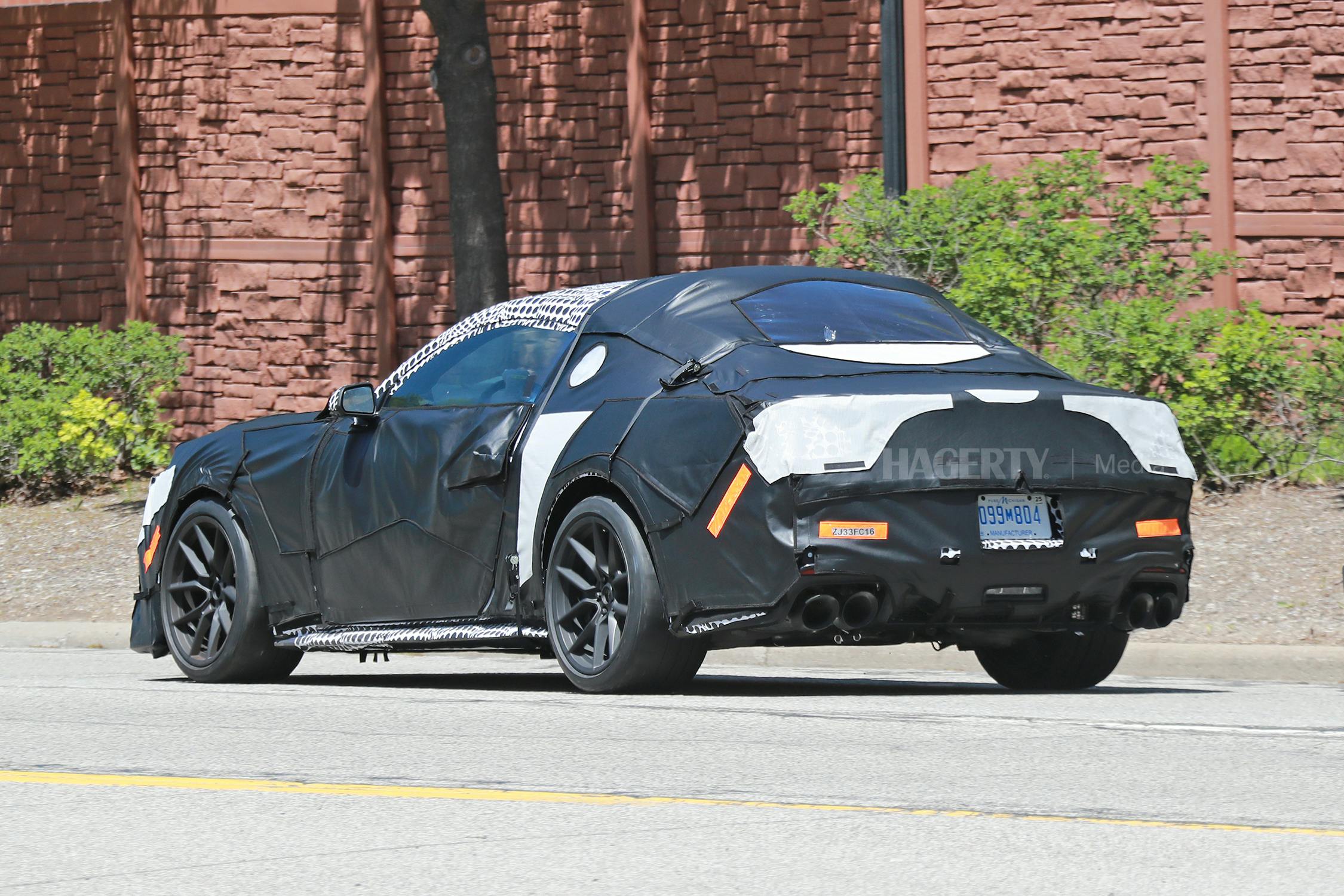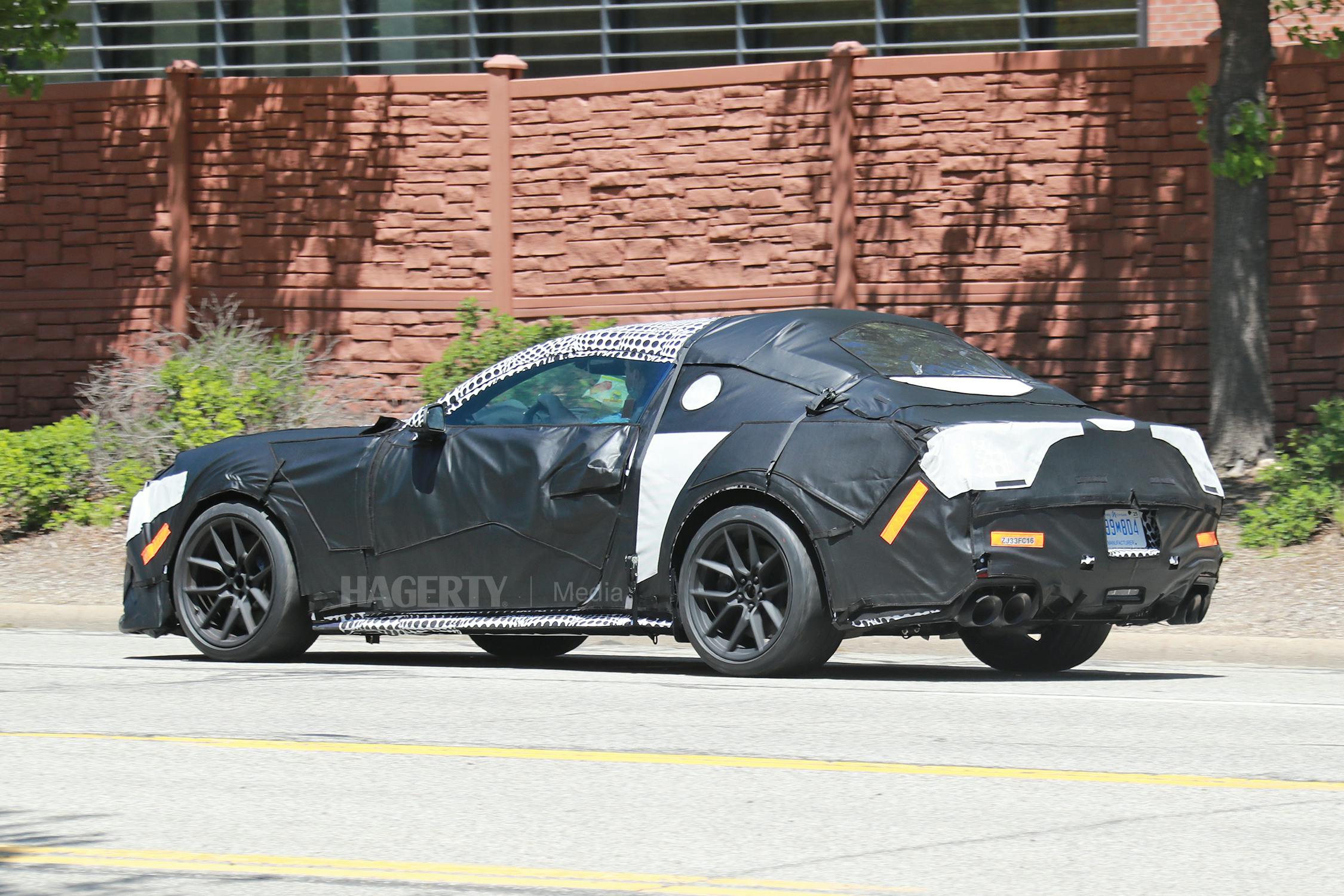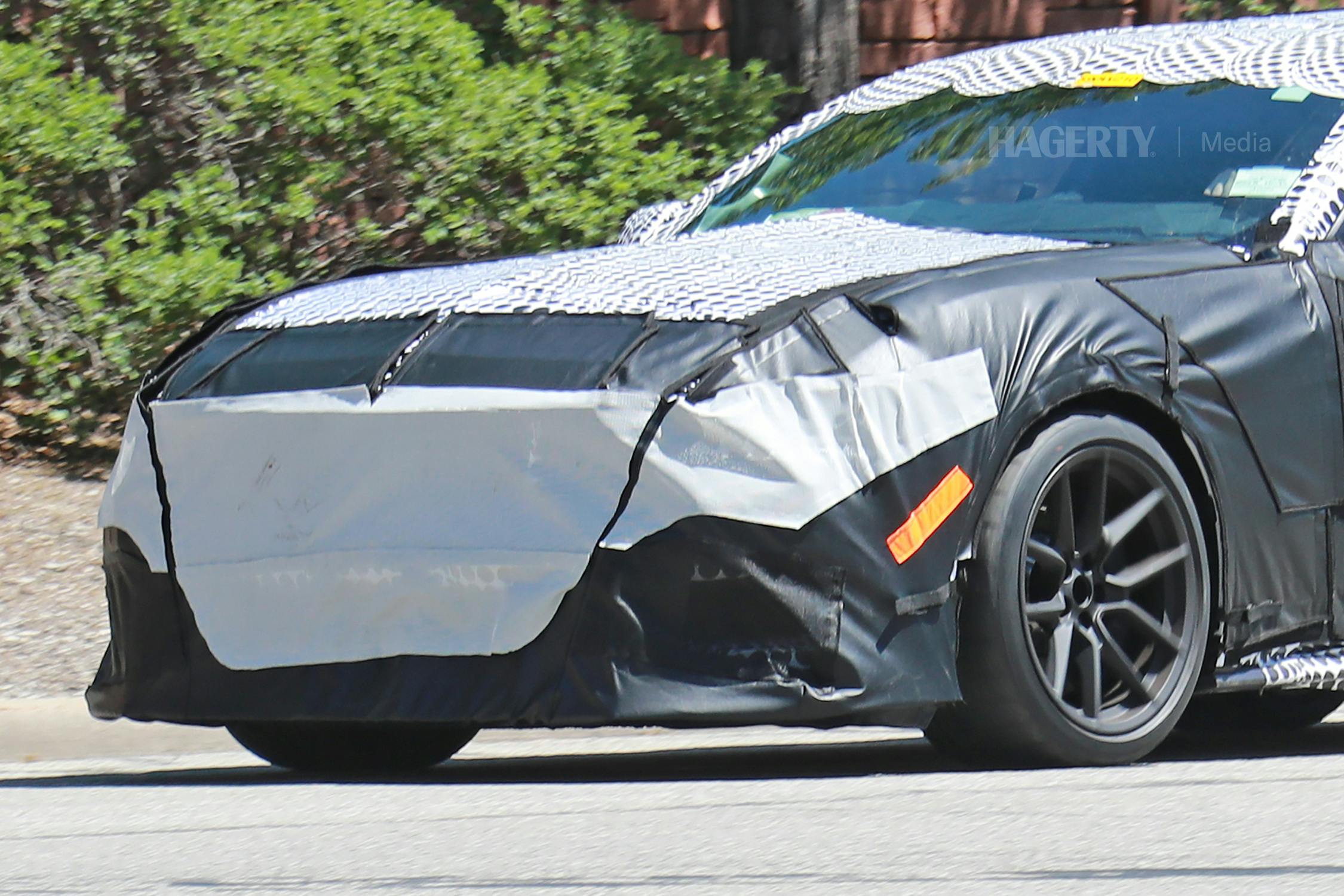Mysterious next-gen Mustang, Brabus tunes Ghost and 911, Orukter Amphibolos redefines “old car”

Is this Mustang prototype the next-gen Mach 1?
Intake: Ford’s busy testing the next-gen Mustang, expected to debut in March of 2023, and the latest spy photos suggest higher-performance models are already getting street time. This heavily disguised prototype could be the next Mach 1, and here’s why: First, and most obviously, Ford’s benchmarking it alongside the current model. Today’s Mach 1 is the most powerful naturally aspirated Mustang in the lineup, costing roughly $20K more than the GT and cribbing performance hardware from the now-discontinued GT350 and still-available GT500: throttle body, intake manifold, transmission cooler, and Tremec six-speed from the former and diff cooler, rear subframe, rear toe-control link, and some aero bits from the latter. Though we have no idea how many of these parts would carry over to the next-gen Mach 1, we do know that Ford is working out the kinks in a new (to the) Mustang architecture. The upcoming Mustang, which will likely carry over most of the engine choices plus a hybrid powerplant, will ride on a chopped version of the rear- and all-wheel-drive CD6 platform that undergirds the Explorer. (Yes, there will probably be an AWD Stang, too.) The subtle nature of the changes to this prototype, compared to the testers we’ve seen earlier, suggest this is not an all-out performance model in the Shelby mold, but rather a track-optimized V-8 model in the Mach 1 tradition. A more aggressively flared quad exhaust protrudes out back, and a much deeper front splitter is visible up front. The brakes are generously sized, and wheels are also new for the prototype—a more open design than this snowflake one and clad in far more aggressive rubber.
Exhaust: We don’t know for sure that this is the next Mach 1, but if it is, and if Ford keeps to its S550 model-introduction cadence, we have a long wait ahead of us. The current generation debuted in this order: GT, GT350, Bullitt, GT500 …. and only then the Mach 1, but the upcoming gen holds the promise of AWD and hybrid power to further complicate matters. Expect the new Mustang, including any Mach 1 variant, to differentiate itself more in handling than in sheer output.
McLaren designer follows in founder’s footsteps
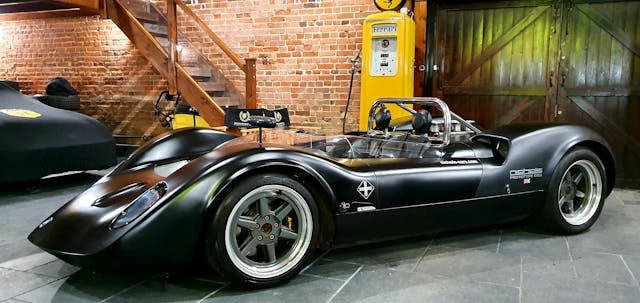
Intake: Steve Nichols, who led the design for the all-conquering McLaren MP4/4 Formula 1 car, has just launched his own low-volume sportster—just like Bruce McLaren himself did. The Nichols N1A is even described as a modern interpretation of the first McLaren M1. “We didn’t set out with the intention of going into production,” explains Nichols. “It was an idea that John Minett, Nichols Cars’ CEO, and I had been talking about for a while. In the end we thought we might as well build one and see how it turned out. Once people saw it on the road, the response was incredible. It’s a bit like the original M1A that started the whole McLaren story. Bruce McLaren built it as a one-off for his own personal use. Then people starting asking him if he could produce a few more!”
The open two-seater may look like a 1960s racer, with its curvaceous body and extended mirror posts, but it uses the latest materials and technology. The chassis is a mix of aluminum and carbon fiber with wishbone suspension all around, while the bodywork was fettled in a wind tunnel. Powering the N1A is a “large-capacity American V-8” with up to 660 hp, and with a target weight of less than 2000 pounds, this will certainly be no slouch. Nichols says the car has already undergone thousands of miles of testing on road and track, with further details including pricing announced in the coming months.
Exhaust: This project certainly has pedigree. It’s considerably less complex than fellow McLaren alumni Gordon Murray‘s latest exploits, but looks like it should be huge amounts of fun nonetheless.
Behold Honda’s first GM-based EV, the Prologue
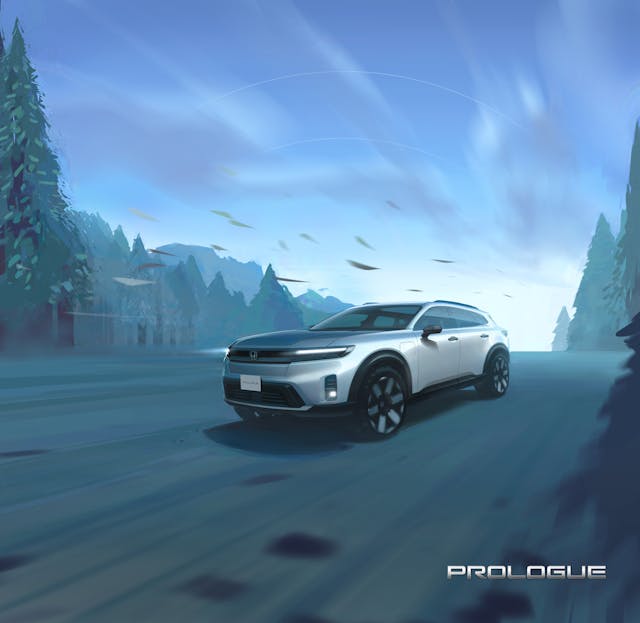
Intake: We’ve known since 2020 that Honda was collaborating with GM to build electric vehicles for the North American market based on the General’s Ultium battery platform. Now, we’ve got our first peek at Honda’s first GM-based EV, the Prologue, whose exterior is shown for the first time in the above render. The GM partnership saves Honda the (exorbitant) cost of exporting its domestic-market e:N vehicles to the U.S., giving it a foothold in the stateside market two years before its in-house, e:Architecture-based vehicles begin production. Though Honda was in negotiations with LG Energy Solution for a U.S. battery plant as of this January, GM is already building two facilities (Warren, Ohio; and Spring Hill, Tennessee) with a third planned for Lansing, Michigan.
Exhaust: From our first look here, the Prologue looks like a Mazda that forgot to smile. (It was designed at Honda’s L.A. studio in collaboration with Japan—make of that what you will.) The resemblance is no bad thing, since Mazda makes some very handsome crossovers, but others may call the Prologue criminally inoffensive, not unlike the last GM/Honda partnership that supplied Honda’s 3.5-liter V-6 to the forgettable Saturn Vue. Either way, we’ll get the Prologue’s … full story in 2024.
Brabus tunes Ghost, 911 Turbo S Cabriolet and glamorizes Taycan
Intake: German tuner Brabus is moving beyond Mercedes to add its razzle-dazzle to Rolls-Royces and Porsches. For the Brabus 700 the Bottrop-based firm takes a Rolls-Royce Ghost and serves up a platter of carbon-fiber components, from a front splitter to aero skirts and a rear diffuser. Forged 22-inch Monoblock M Platinum Edition wheels are fitted, and the Brabus Ghosts sits over an inch lower than the standard car. The 6.7-liter V-12 engine gains an additional 100 horses for a total of 700 hp, bringing the 0-to-62 mph time to just 4.6 seconds. It even comes with a rogue-ish switchable stainless-steel sports exhaust, while the cabin gets a lavish white leather makeover.
Brabus has also picked the 911 Turbo S Cabriolet and the Taycan Turbo S to receive its special treatment. The 911 is christened the Brabus 820 with new turbochargers delivering its namesake 820 hp from the 3.8-liter flat-six. Once again the visual treatment is all about the carbon fiber, with a new splitter skirts, side flaps, rear diffuser and a fixed rear wing that sits atop the ducktail. Adjustable suspension can be lowered by over an inch and there are new 21 and 22 inch wheels. Inside is like a luxury padded cell of quilted leather.
When tackling the Taycan, Brabus has taken a strictly cosmetic approach. The Brabus for Porsche Taycan Turbo S adds, you’ve guessed it, carbon elements front, side and back, plus the brand’s own 22-inch rims., but most of the effort has gone on the interior where a lurid green meets black quilted leather.
Exhaust: These custom jobs may upset the more traditional Rolls-Royce and Porsche buyers, but they also help to build OEM brand awareness among a flashier, young-money crowd who sees cars as personal billboards, or fashion statements. To them, a Porsche or a Rolls is the sort of car a rich person drives; they don’t know or care about Le Mans or the 356 or early 20th century British craftsmanship or the Bentley buy-out. One could argue that Rolls in particular owes Brabus much for getting its name on the Instagram feeds of those who’d never look twice at the understated luxobarges that built its name.
Genesis unveils pricing for its first electric SUV … with a warning

Intake: Genesis should just tell everyone to build its new GV60 EV crossover at their own risk, as the vehicle’s official landing page makes it clear that the luxurious offshoot of Hyundai’s E-GMP platform is “currently at select retailers, with extremely limited availability.” Those retailers are in California, Connecticut, New Jersey, and New York, and building either the 248-mile Standard or 235-mile Performance variant (at roughly $59,000/$68,000) on the configurator shows a stunning lack of options. There’s a respectable number of colors available, and luckily all the good stuff comes standard: fingerprint and face recognition, impressive charging rates when connected to a 350kW DC fast charge system, and standard all-wheel-drive powertrains (314 and 439 hp, respectively), plus a limited-use “boost” feature for the higher-powered one up to 483 hp. Let’s hope the ability to lock the system in rear-wheel-drive and do unconstrained burnouts in the high power GV60 Performance spec is still in the cards.
Exhaust: The limited-availability GV60 is about $15,000 more than the sistership Hyundai Ioniq 5, which isn’t too far off from other automakers playing in multiple markets. To wit, the Lexus ES350 is roughly $17,000 more than a baseline, four-banger Camry. And just like the ES, the GV60’s increased performance, added luxury, and an improved standalone dealership experience might make the price premium a worthy upgrade. But Genesis offers more SUV for less money with the $41,500 GV70, provided you don’t mind a conventional, turbocharged four-cylinder gasoline engine. Still, the GV60’s performance, technology, and value proposition makes it a worthy competitor (on paper, at least) to Ford’s controversial Mach-E GT and a refreshingly blank-slate alternative to the Tesla Model X. The GV60’s strongest differentiating factor, however, will likely be Genesis’ upmarket service experience.
235 years ago, the engine that powered the U.S.’ first road-going vehicle was patented
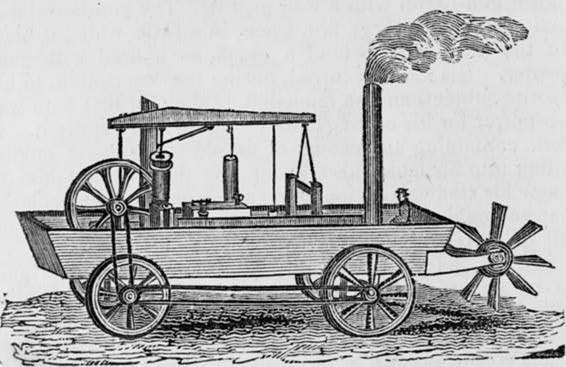
Intake: We have a clear timeline of very early cars thanks to the U.S. patent system. For instance, on this day in 1787, Oliver Evans was granted patents for a new type of steam engine that placed the cylinder and crankshaft at the same end of the beam, an arrangement which countered most designs. This more compact engine made it feasible to create a vehicle that didn’t need to run on tracks. Evans constructed the Orukter Amphibolos, a type of amphibious digger, in July of 1805, and with that became the creator of the first engine-powered, road-going vehicle in the United States.
Exhaust: When you say “old car,” your first mental image is probably of a vehicle that dates back only 100 or so years. Some might even imagine the first patented automobile, which Karl Benz was driving in 1886 … but this absurdly named, steam-powered digger beat Benz to the engine-powered (as opposed to electric motor–driven) party by 85 years.




